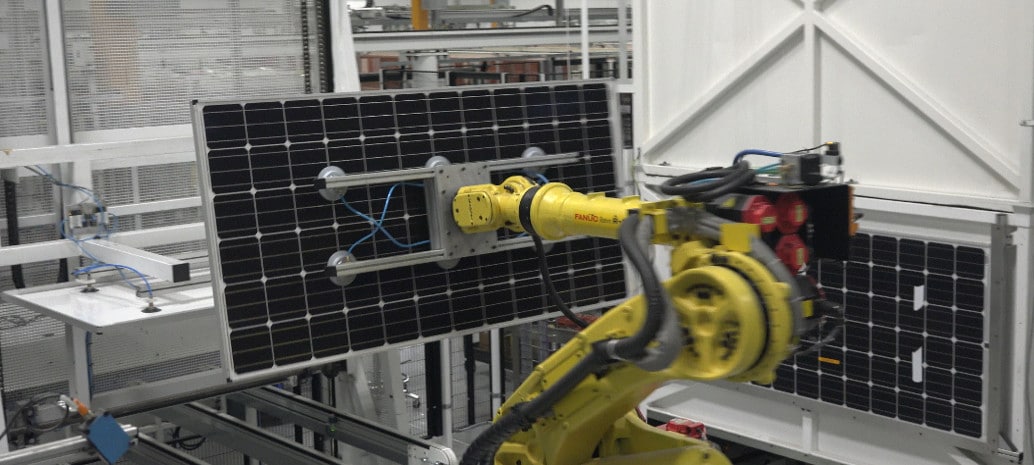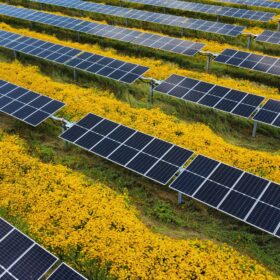Solar panel prices are falling again, thanks to miscalculations by (primarily) Chinese manufacturers. Recent data suggests prices are sliding, which is good news for downstream installers and consumers across the United States — but is horrible news for PV makers.
For those with institutional memory, they will remember the industry saw the prequel to the current movie — and for those PV module manufacturers who aren’t prepared to compete, it could have devastating consequences.
The U.S. industry faced a similar situation in 2011, when a flood of undervalued panels entered the market. Overproduction by Chinese manufacturers, designed to capture marketshare from the German firms that were dominating the market at the time, allowed them to unload panels at aggressively low prices (often below the actual manufacturing costs) and PV makers felt the bite across the board.
While the panel-beat reporter at Solar Power World, I witnessed the pain first hand. At my first Solar Power International show in 2011, on the final day, I met with one marketing person from a Chinese manufacturer who was the most depressed marketing person I’ve ever met. He told me the price drops were killing the panel market and that few — if any — panel companies would make profits that year. That marketing person’s company went belly up, and he was quickly out of a job. No wonder he was depressed.
2011 was a rough year for PV makers. Manufacturer after manufacturer pulled out of the U.S. market, costing the industry competition and Americans jobs. Things got so bad that one PV maker launched a crusade against Chinese manufacturing that has an impact on the industry to this day.
While the causes are different, Paula Mints, founder and chief market research analyst for research firm SPV Market Research, says the results may well be similar. Mints cautions, however, that those who make direct comparisons between now and 2011 are ignoring the different causes.
“This time, the price slide is caused overproduction by Chinese manufacturers and Taiwanese cell manufacturers,” Mints says. “On the part of the Chinese, it was primarily to fulfill demand for its accelerating domestic market — 22-GWp by July and probably around 28-GWp by the end of the year. The government only wanted 15-GWp a year.”
Mints adds that despite a highly unprofitable market, slow or no FiT payments, and high levels of curtailment, developers (in most cases developers in China are directly connected to manufacturers) just kept on building.
Eventually, however, the Chinese government stopped the unmanageable building, which leaves gigawatt levels of production — at this point it is manufacturer inventory — needing a home. Unlike 2011, which was aggressive pricing by Chinese manufacturers to capture marketshare, today’s slide is caused by panic selling, Mints says.
Mints adds that it remains to be seen if the industry can learn the lesson it didn’t before — that these low prices are not progress and not related to cost. But she’s afraid she’s already seeing evidence of unlearned lessons.
“Unfortunately, we’re seeing this lesson play out again on the demand side, too, where low PPA bids are a gathering storm indicating margin compression for developers.” Mints says. “For cell and module manufacturers, they are currently in the unenviable position of struggling to make profits.”
Mints sees the slide continuing for several months as the oversupply of panels works its way into the market and production is scaled back.
All of which is reason for savvy investors and industry observers to watch the panel market closely. It could be a bumpy ride for a while, and there may be some manufacturers that succumb to the competition. Let’s hope the collateral damage that results panic selling doesn’t result in the industry bloodbath that followed the 2011 drop.
The views and opinions expressed in this article are the author’s own, and do not necessarily reflect those held by pv magazine.
This content is protected by copyright and may not be reused. If you want to cooperate with us and would like to reuse some of our content, please contact: editors@pv-magazine.com.








By submitting this form you agree to pv magazine using your data for the purposes of publishing your comment.
Your personal data will only be disclosed or otherwise transmitted to third parties for the purposes of spam filtering or if this is necessary for technical maintenance of the website. Any other transfer to third parties will not take place unless this is justified on the basis of applicable data protection regulations or if pv magazine is legally obliged to do so.
You may revoke this consent at any time with effect for the future, in which case your personal data will be deleted immediately. Otherwise, your data will be deleted if pv magazine has processed your request or the purpose of data storage is fulfilled.
Further information on data privacy can be found in our Data Protection Policy.